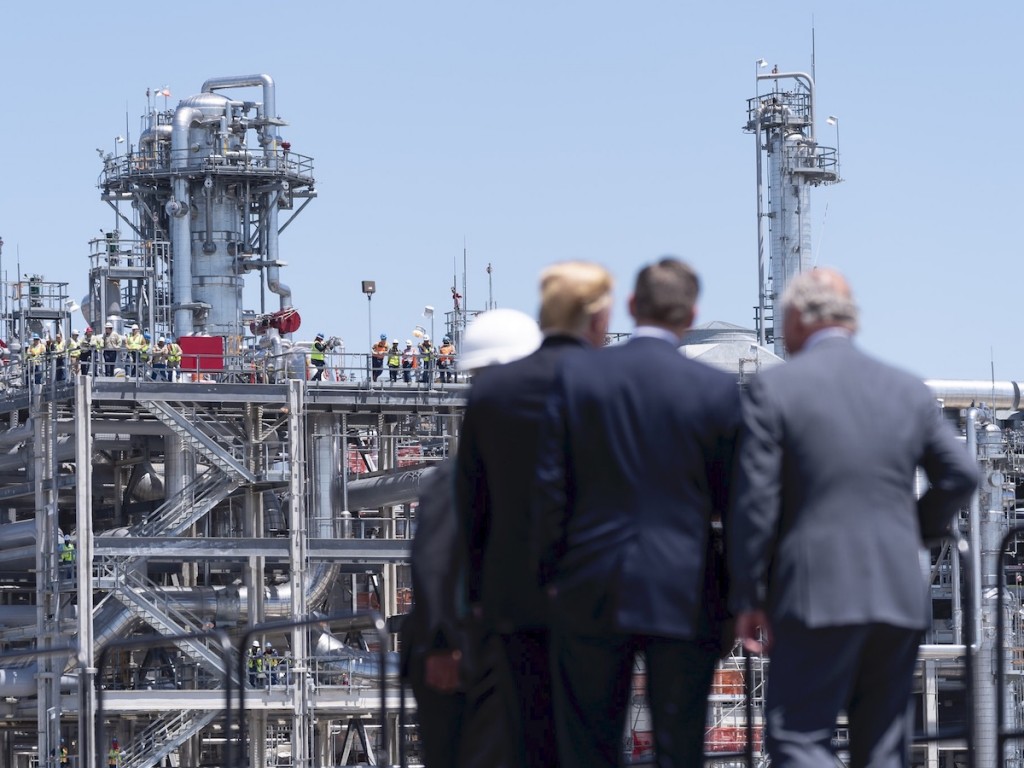LNG infrastructure
Regional Demand
In mid-June, the Philadelphia City Council approved a plan to build a $60 million liquefied natural gas (LNG) facility in Southwest Philadelphia. The Passyunk Energy Center will be a public-private partnership between city-owned Philadelphia Gas Works and Liberty Energy Trust.
Across the river in southern New Jersey, a group of New York investors plans to build an LNG port along the Delaware River, presumably to export LNG produced by a related company with operations in north-central Pennsylvania. The investment group has also proposed to create a liquefaction plant near the source of the fracked natural gas, the Marcellus Shale fields, in Wyalusing, Pennsylvania.
These developments are emblematic of what’s going on in the United States, in what some call the new natural-gas economy. The U.S. is an emerging LNG supplier, accounting for four percent of global LNG exports in 2017. The country is projected to become the third largest LNG producer in the early 2020s, after Australia and Qatar.
LNG Export Terminals
The first LNG export terminal in the contiguous 48 states, in Louisiana, entered service in 2016 following Department of Energy approval, helping to make the U.S. a net exporter of gas in 2017 for the first time since 1957. The DOE recently gave its preliminary approval to retrofit an import terminal in Maryland to export LNG, a facility already connected to a pipeline that would bring gas straight from Marcellus Shale. About 16 other export terminal proposals now await approval by the DOE.

According to a recent report, U.S. liquefaction capacity will have increased thirteen-fold by 2022 over the previous five years. The country is expected to have spent over $167 billion on new liquefaction terminals between 2017 and 2022, according to GlobalData, a data and analytics company.
These developments are not without controversy. Environmentalists squawk when LNG projects are announced—including the ones in Philadelphia and South Jersey—on the grounds that the U.S. should be weaning itself, and the rest of the world, off fossil fuels. It’s worth mentioning, however, that, as fossil fuels go, natural gas burns a lot cleaner than some others, including diesel.
As noted in a 2012 DOE report, which gave the thumbs-up to LNG exporting, “U.S. natural gas prices increase when the U.S. exports LNG.” Although the report identified a net benefit to the U.S. economy from exporting, chemicals manufacturers, which use natural gas as a feedstock, howled in protest. The use of LNG is also on the rise domestically to fuel vehicles. UPS, for example, recently added 50 LNG vehicles to its alternative fuel fleet as part of an investment of over $90 million in natural gas. But transporting LNG domestically on the water has its obstacles, thanks to the Jones Act. (See sidebar on page 3)
Policymakers in Philadelphia, New Jersey, and elsewhere, point to advantages from LNG in diversifying fuel sources for utilities and in the areas of economic development and jobs creation. The Trump administration is also encouraging U.S. producers to export surplus gas, especially to Europe.
According to Nikos Tsafos, a senior fellow at the Center for Strategic and International Studies in Washington, D.C., Europe currently imports mostly piped gas from Russia, Norway, and Algeria, while LNG accounted for 12 percent of European gas demand in 2017. The U.S. supplied four percent of Europe’s LNG in 2017, ranking behind Qatar, Algeria, Nigeria, Norway, and Peru, and, at less than 100 billion cubic feet, amounted to less than 1.5% of Europe’s gas imports from Russia. Around 14% of US LNG exports went to Europe in 2017.
“Europe can import more LNG using existing infrastructure,” noted Tsafos, adding that the utilization rate for import terminals in Europe averages 29%, and is as low as six percent in some facilities.
“Despite this low utilization rate,” Tsafos said, “there are many new facilities proposed in Europe. If all these projects were built, Europe’s LNG import capacity would grow by 50%.” It’s impossible to predict at this point the precise increase in Europe’s future LNG importing capacity, but it is clear that Europe has growth potential as a U.S. LNG export market.

